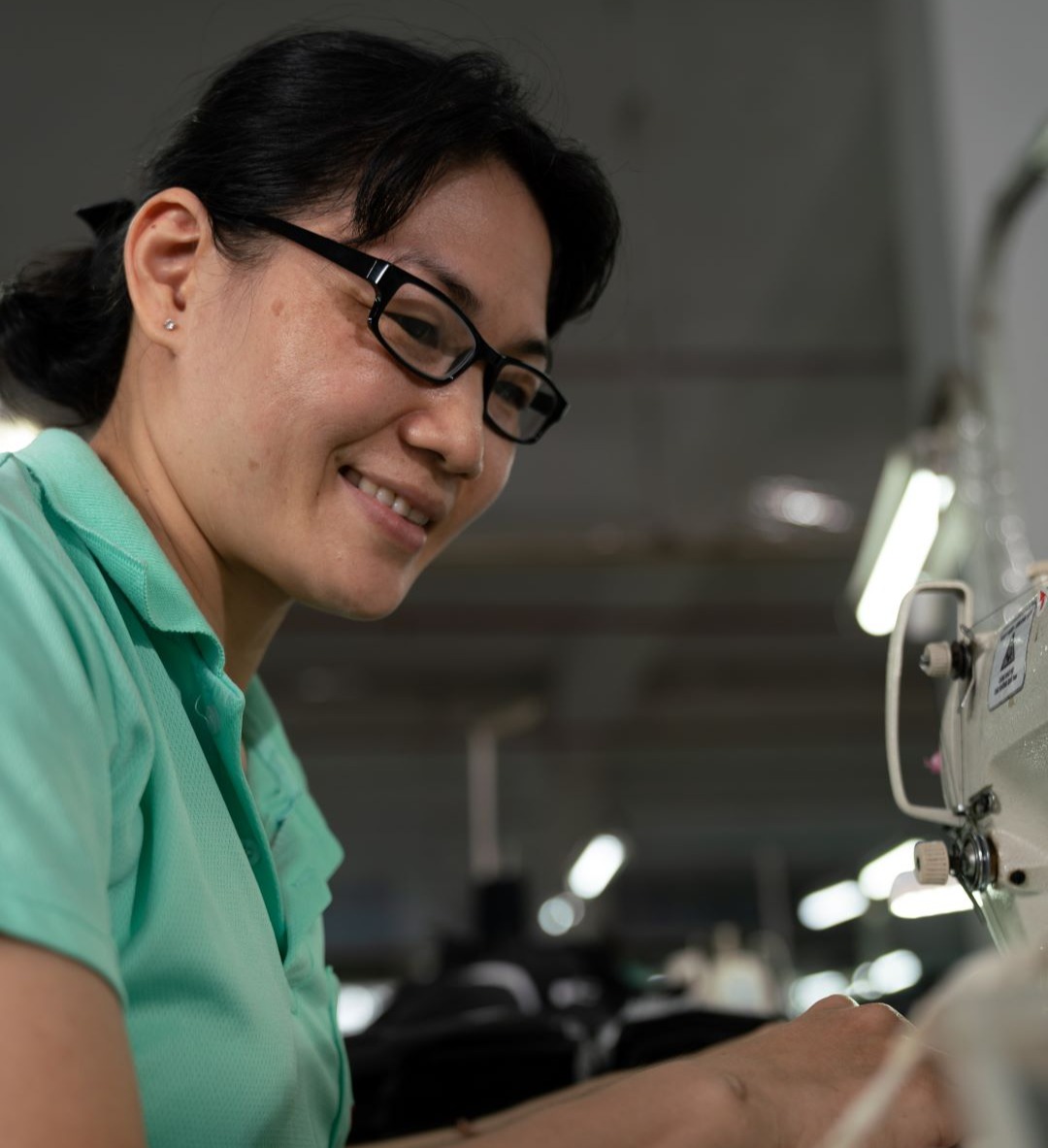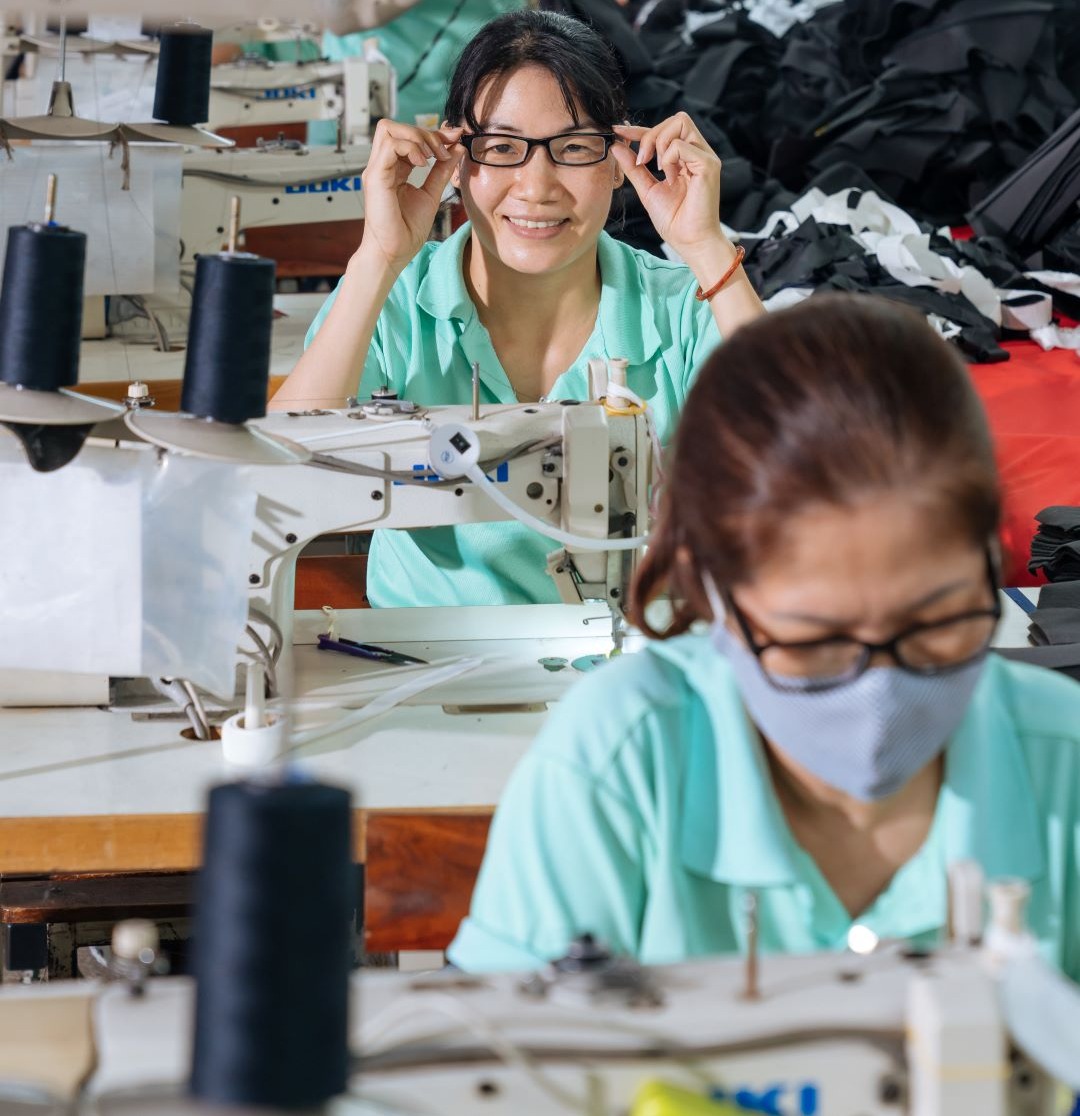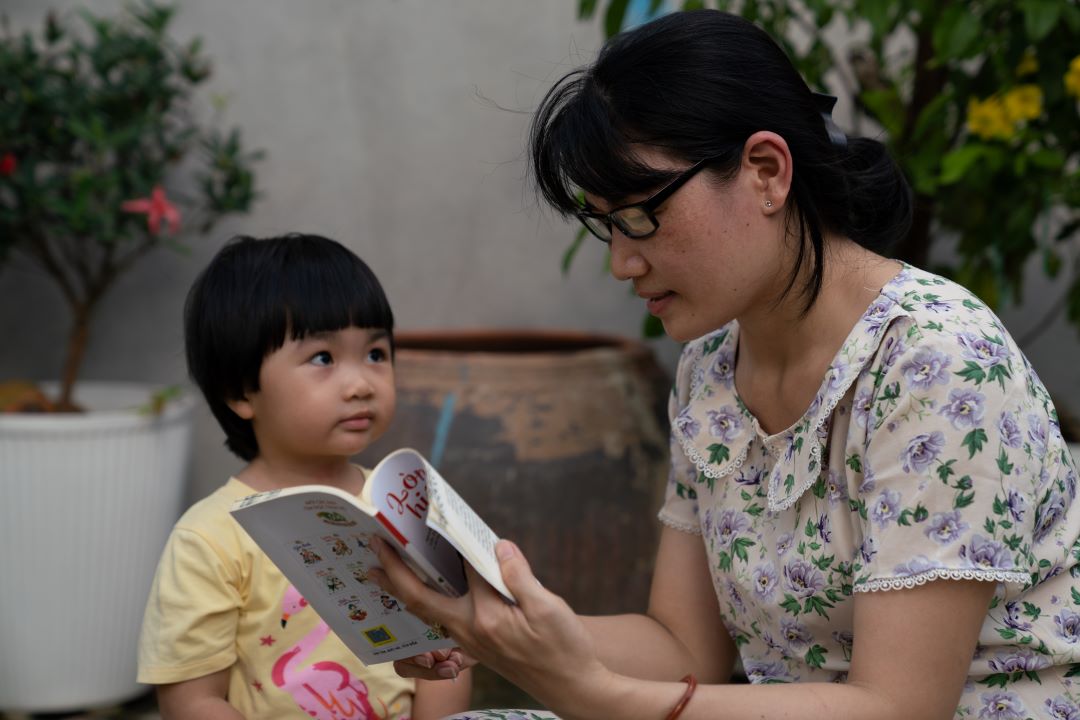Amid the constant hum of sewing machines in a garment factory in Viet Nam’s Binh Duong Province, Nguyen Thi Trang deftly threads a needle—something she now does with far more ease than just a few years ago. A veteran employee at Domex Factory, Trang has spent over two decades on the sewing line, accustomed to long shifts and meticulous work. But when her eyesight began to deteriorate, even the most routine tasks became a challenge.
As she sits by a collection of newly sewn garments, Trang recalls the moment she realized something was wrong. “Focusing got hard,” she says. “I started making mistakes when working with dark fabrics. At home, I couldn’t read the labels on my children’s medicine or help them with their homework.”

Trang, 43, is one of millions dealing with presbyopia—a common age-related condition that affects near vision and typically begins to surface in individuals around 40 years of age. Like many living in low-income communities, Trang was unaware her eyesight was deteriorating. With three children to care for and only one day off work each week, scheduling an eye exam was out of reach both financially and logistically.
That changed when VisionSpring partnered with local health workers to bring on-site eye screenings directly to Trang’s workplace. The initiative was part of the “Clear Vision Workplaces” project, aimed at improving eye health among low-income workers. During the visit, Trang was diagnosed with presbyopia and received her first pair of eyeglasses.
She laughs as she recalls her first experience wearing glasses. “At first, they made me feel dizzy,” Trang recalls. “But then everything came into focus. It felt like I had a brand-new pair of eyes.”

The impact was immediate. Trang’s productivity at work improved noticeably, and at home, she was once again able to read bedtime stories and help her children with their schoolwork—small routines she had deeply missed. Perhaps most meaningful of all was her children’s reaction. “They told me I looked prettier wearing glasses,” she says with a smile.
Trang’s experience is far from unique. More than a billion people worldwide live with vision problems that are either preventable or easily treatable. In many cases, all that’s needed is a simple eye exam and a pair of eyeglasses. Yet for countless individuals like Trang, accessing even these basic services can feel as out of reach as the stars.
“Eyeglasses are expensive, and workers like us simply can’t afford them,” Trang explains. “Without support, we just keep working—until we no longer can.”
For factory workers, precision is everything. When vision falters, so does job security—often leaving workers with a difficult choice between struggling through or losing their livelihood. Trang believes that access to basic eye care should be a fundamental right, not a luxury.

Trang’s call for action is well-founded. Experts agree that both companies and governments must do more to prioritize vision care—by providing regular eye screenings and educating workers on the importance of maintaining their eye health.
When Trang speaks to those in positions of authority, her message is simple: clear vision transforms both work and daily life. “It’s not just about being able to see,” she says. “It’s about dignity.”
It’s remarkable how simple solutions can have such a profound impact. In many cases, providing someone with a properly fitted pair of eyeglasses is enough to transform their lives.
Presbyopia is a frequent eyesight issue tied to aging that starts after you hit 40. It makes focusing on things up close hard, which can turn activities like reading, threading needles, or spotting small details into a challenge. It’s not an illness; it happens as the lens in the eye becomes less flexible with age. The most cost-effective treatment for presbyopia is eyeglasses. Since presbyopia happens with age, you can't stop it from occurring. Regular eye checkups help to detect it and avoid its effects. Trang and many other low-income workers often miss out on access because of cost, busy schedules, and lack of awareness. Programmes such as VisionSpring’s "Clear Vision Workplaces" can close this gap by bringing care right to these communities.
This story was developed based on an interview conducted by VisionSpring.
Photo credits: Khanh Phan via VisionSpring.
